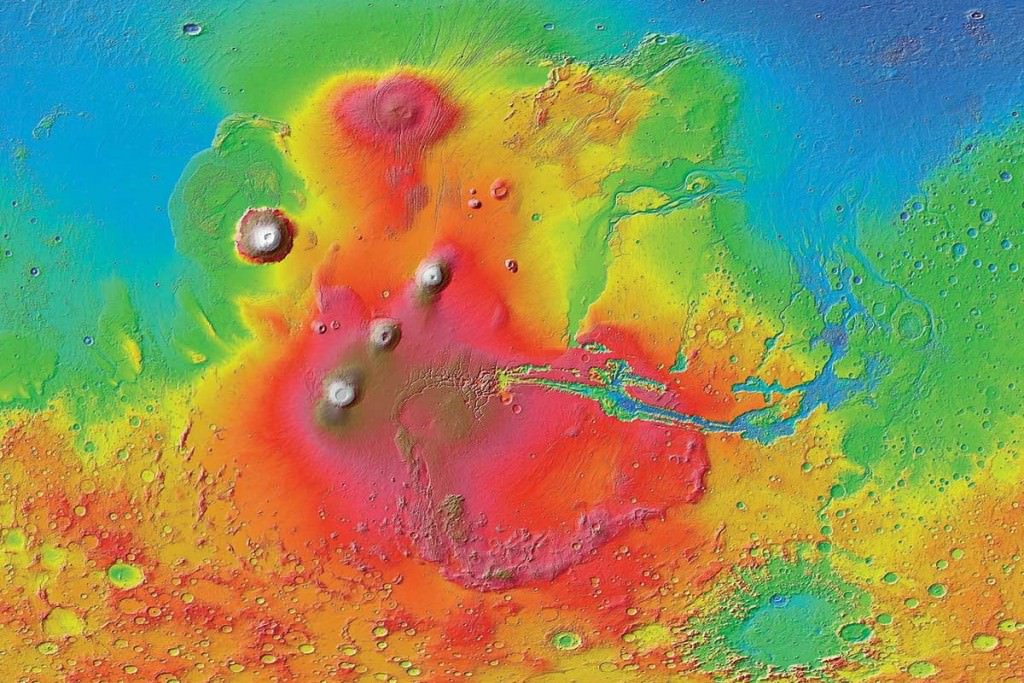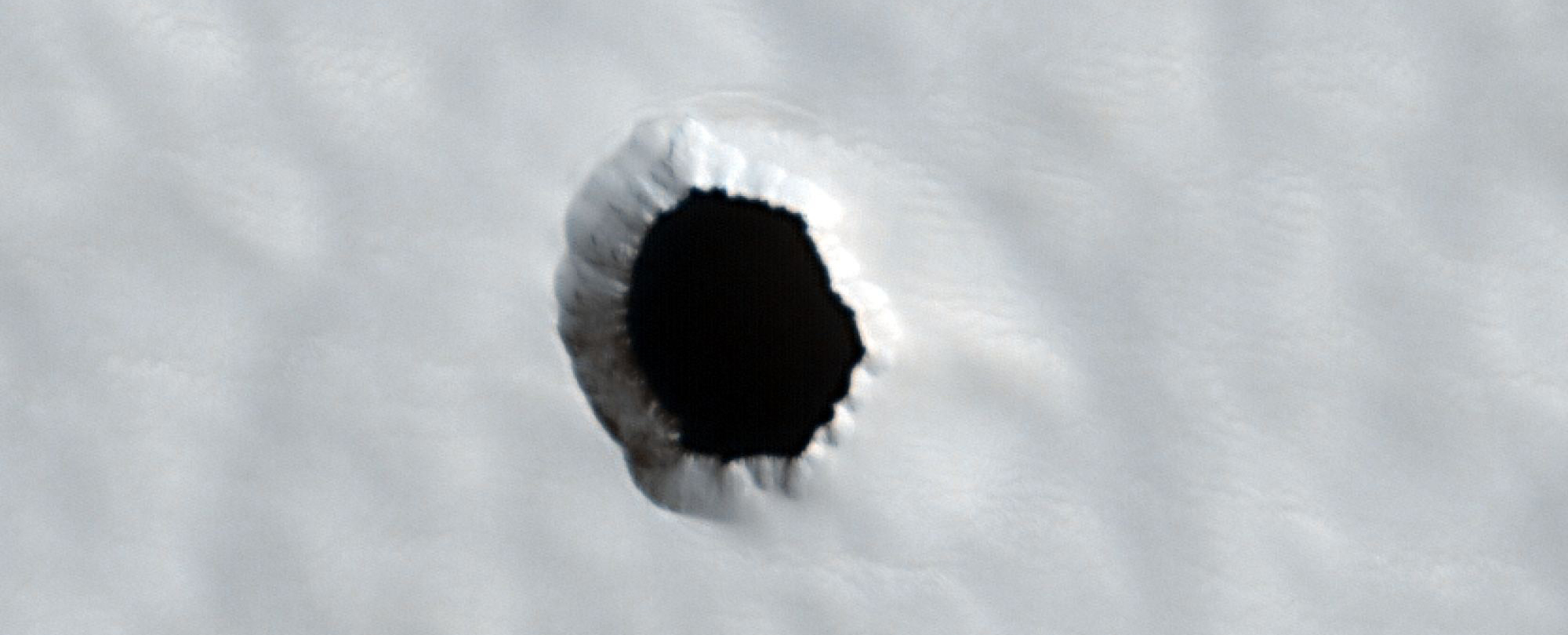Products You May Like
Human visitors to Mars need somewhere to shelter from the radiation, temperature swings, and dust storms that plague the planet. If the planet is anything like Earth or the Moon, it may have large underground lava tubes that could house shelters. Collapsed sections of lava tubes, called skylights, could provide access to these subterranean refuges.
Does this hole on Mars lead to a larger underground cavern?
This image was captured by the High-Resolution Imaging Science Experiment (HiRISE) camera on NASA’s Mars Reconnaissance Orbiter (MRO).
The pit is only a few meters across and is in the Arsia Mons region of Mars. Arsia Mons is one of the three dormant volcanos in the Tharsis Montes group of three volcanos.

The Tharsis Region of Tharsis Bulge is a vast volcanic plain that’s thousands of kilometres across. It’s elevated compared to the rest of Mars and averages about 10 km (33,000 ft) above the planet’s mean elevation. The region was volcanically active in the past, obviously, and features like the pit are a direct result of ancient volcanic activity.
Several pits in the Arsia Mons region may be collapsed skylights or openings into subterranean lava tubes.
However, there is much uncertainty. An image of one of them shows an illuminated sidewall, which could indicate that it’s just a cylindrical pit.

The hole in the featured image could be only a pit or shaft and not an entrance to a cave or lava tube. They’re found on Hawaiian volcanos, where they’re called pit craters. They don’t connect to long caves or lava tubes. They’re the result of a collapse that happened much deeper underground.

In Hawaii, the pit craters range from 6 to 186 meters (20 to 610 feet) deep and from 8 to 1140 meters (26 to 3,740 feet) wide. The Arsia Mons pit in the leading image is only about 178 meters (584 feet) deep.
We have a much better understanding of lava pits and tubes on the Moon than we do on Mars. We know some of them are thermally stable at about 17 C (63 F.) We also have better images of them, with intriguing glimpses of boulder-covered floors.

Lots of thinking is going into how to explore these lunar caves and lava tubes, including conceptual designs for robots that could explore them. Maybe on the Moon, astronauts could take shelter in inflatable habitats inside these tubes, where they’re protected from temperature swings, radiation, and micrometeorites.
But Mars is another question. There’s no reason that lava tubes shouldn’t exist on Mars. In fact, Mars’ gravity is much weaker than Earth’s, and that should allow for much larger tubes.
Images of Mars show rilles, which are collapsed tubes. It seems likely that not all of these tubes have collapsed to form rilles.
One pit on the Martian volcano, Pavis Mons, is particularly intriguing. There’s some kind of void under the pit, but the nature of the pit is difficult to ascertain. Is it a lava tube? If it is, it dwarfs most tubes on Earth.
frameborder=”0″ allow=”accelerometer; autoplay; clipboard-write; encrypted-media; gyroscope; picture-in-picture; web-share” referrerpolicy=”strict-origin-when-cross-origin” allowfullscreen>
Martian lava tubes are still a mystery. Scientists have found plenty of morphological evidence suggesting that they’re plentiful.
But in science, you can’t assume they’re there, even though it seems likely that they are. There’s no clear reason why they wouldn’t be. Could they one day provide shelter for astronauts? Maybe.
We need a robotic mission to explore them first.
This article was originally published by Universe Today. Read the original article.
